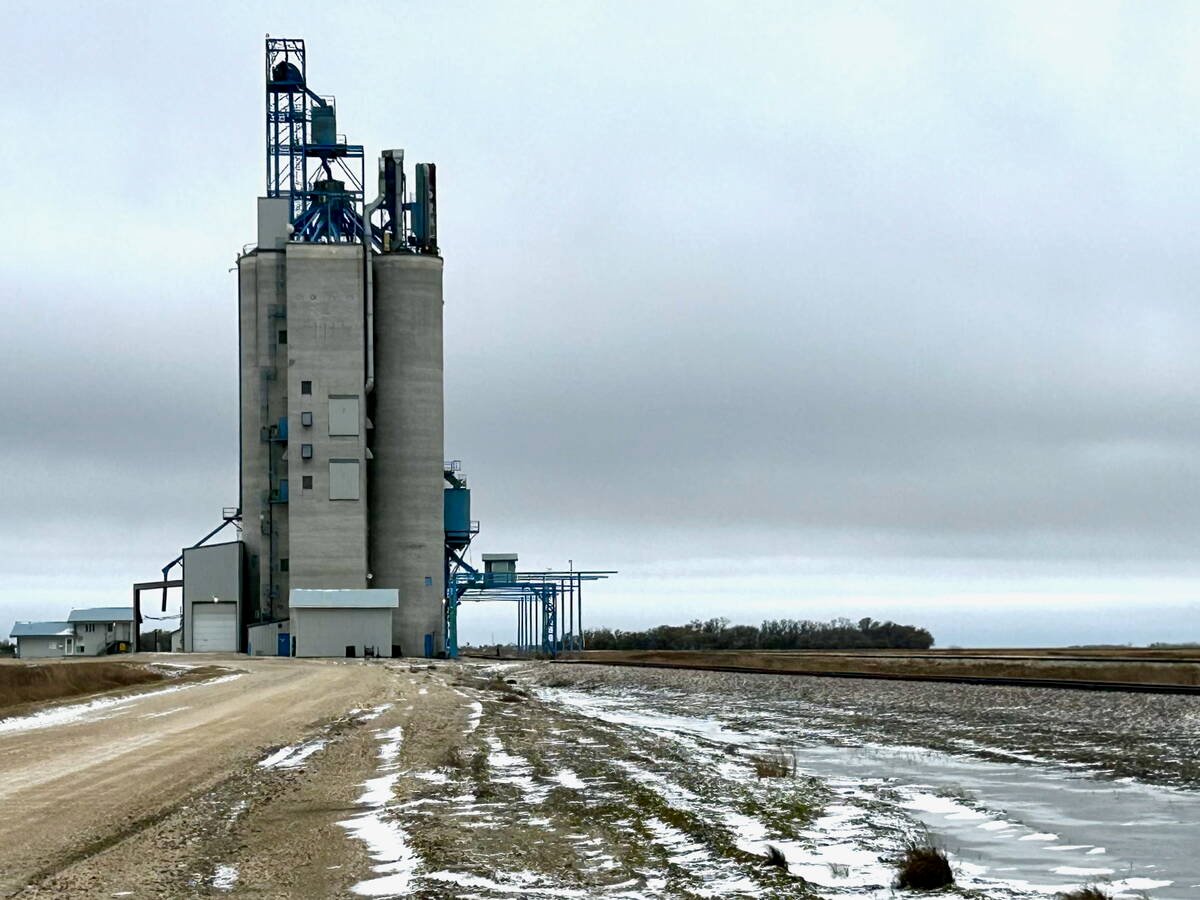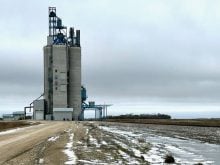GLENLEA, Man. – After more than 35 minutes of talk from politicians and farm leaders, Marg Rempel still didn’t know whether she was going to be able to survive as a hog farmer.
“I’m not exactly sure what this means. I’ve got lots of questions,” said Rempel, a Landmark, Man., mixed farmer, after listening to the announcement of federal aid for the hog industry.
There were few details available Aug. 15 or in days following about how the two-pronged plan will work.
For farmers who want to keep producing hogs, there is government backing for long-term loans to pay for restructuring, converting short-term debts requiring repayment and providing operating capital.
Read Also

Manitoba grain elevator ownership expands
Carman-based Linear Grain buys Fannystelle elevator from Bunge, another three elevators sold to Morden’s BP & Sons Grain and Storage Inc.
The amount of loans could exceed $800 million, federal agriculture minister Gerry Ritz said at the announcement, held at the University of Manitoba’s National Centre for Livestock and the Environment.
To qualify for a loan, farmers would have to convince lenders that their business plan is sound.
For farmers choosing to mothball their hog barns for at least three years, there is a $75 million pot of money to pay for shutdown costs, described as “transition.”
Farmers would tender bids to this program for the costs of shutting down their operations. The program will be run so it does not suddenly flood the market with hogs.
Few details were available on how these programs would operate or who would make crucial decisions about viability and amounts of payments.
“Who qualifies for the transition program and who gets a loan to restructure,” asked Rempel.
“There seems to be some kind of dividing line. Where is that dividing line?”
Federal officials said details will be available in the coming weeks.
After the announcement, Red River Valley farmers who produce weanlings for the U.S. market and are now cut off from that market because of country-of-origin labelling, seemed unimpressed by the programs.
But national hog industry leaders praised them.
“We thank the honourable Gerry Ritz and his government for listening to our request for assistance, supporting the industry’s strategic transition plan and taking action to provide a helping hand,” said Jurgen Preugschas, president of the Canadian Pork Council.
“The fundamentals of hog farming in Canada remain strong, but the industry is suffering from a number of factors beyond our control …. The right combination of government policy, programs, industry initiatives and pure farmer drive will establish a foundation for success, but it won’t come without significant pain.”
Laurent Pellerin, president of the Canadian Federation of Agriculture, noted the unfortunate nature of the “transition” program.
“It is very hard for me to accept that we have to cut back and have to reduce this sector in Canada,” said Pellerin, who has been producing hogs in Quebec since 1972.
“I hope it’s a temporary situation.”
Politicians and farm leaders pointed to the same causes for the crisis they have often referred to, including a higher Canadian dollar, COOL, a simultaneous cyclical low in hog prices and H1N1.
The long-term solution to the industry’s problems highlighted in the current crisis will be multi-pronged, Preugschas said. It will include convincing Canadians to consume more pork, demand Canadian-raised pork and shun foreign pork, open new markets overseas and expand existing non-U.S. markets and reduce production.
By 2014, the industry hopes to have reduced annual hog production by 5.5 million head.
American hog farmers have threatened trade action against Canadian pigs and pork if government aid is given to the industry, but Ritz said he thinks neither the loan nor the transition payments will breach Canada’s trade agreements.
He said he had spoken to U.S. agriculture secretary Tom Vilsack on Aug. 14 and did not sense disapproval of the Canadian approach.
“He assures me that his first look at this very much mimics and parallels what their programming is in the States, so I’m thinking that this is a hopeful sign that this will not be a challengeable situation,” said Ritz.
But he noted the U.S. system can be used by aggressive interest groups to interfere with trade, so there are no guarantees.
Preugschas said Canadian hog farmers have already reduced their breeding herd by 12 percent and the transition program will reduce it more, so Americans should be following suit.
“We challenge the Americans to do the same … by reducing their production,” said Preugschas.
The hog industry that arises from the current calamities may be transformed, he said. It won’t be a supply management system, but the industry does want to evolve into a “managed supply” situation in which farmers, packers and distributors work together and share the ups and downs.
The announcement also contains a $17 million fund for market research, promotion and “access initiatives to find new customers for Canadian pork.”















